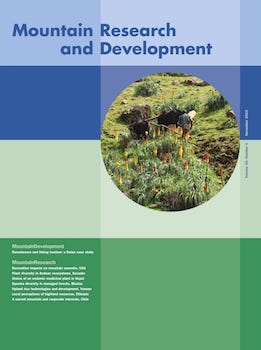Increasing human and livestock populations in Ethiopia are leading to a growing demand for food and feed. Cereal cropping is highly prioritized at the cost of the livestock subsector and the environment. Grazing land is decreasing, leading to overstocking and overgrazing of pastures, thus fueling conflicts over scarce resources and exacerbating further land degradation. Two independent surveys were carried out in 4 areas in the Ethiopian Highlands, using questionnaires to investigate livestock husbandry as well as farmers' perceptions and attitudes regarding the relationship among cropping, livestock, and natural resources, in the context of broader reflection on what could help support Ethiopia's human, animal, and environmental needs in a sustainable way. In total, 684 farmers were interviewed in 75 villages. The majority of animals were said to be fed on natural pasture and crop residues; only 1.3% of the respondents purchased supplementary feed. Overall, cropland had increased in the study area at the cost of grazing land, and overstocking of pastures was seen as a major problem. Decreasing grazing land was also considered to be due to drought in Woldia and increased human population in Gurage. No pasture management system was in place at community level in our study sites. Less than 2% of the respondents perceived and understood land degradation and subsequent reduced land fertility to be a constraint for sustainable feed production. Measures and priorities for future livelihoods were perceived differently by farmers from different regions. We discuss strategies for de-stocking cattle herds, the nature of which is intrinsically tied to cereal cropping. This study highlights the lack of understanding amongst farmers of the causes and effects of land degradation and the lack of community-based strategies for conservation agriculture.
How to translate text using browser tools
1 November 2010
Farmers' Perceptions of Livestock, Agriculture, and Natural Resources in the Rural Ethiopian Highlands
Rea Tschopp,
Abraham Aseffa,
Esther Schelling,
Jakob Zinsstag
agriculture
conflict
Ethiopia
land use
livestock
natural resources





